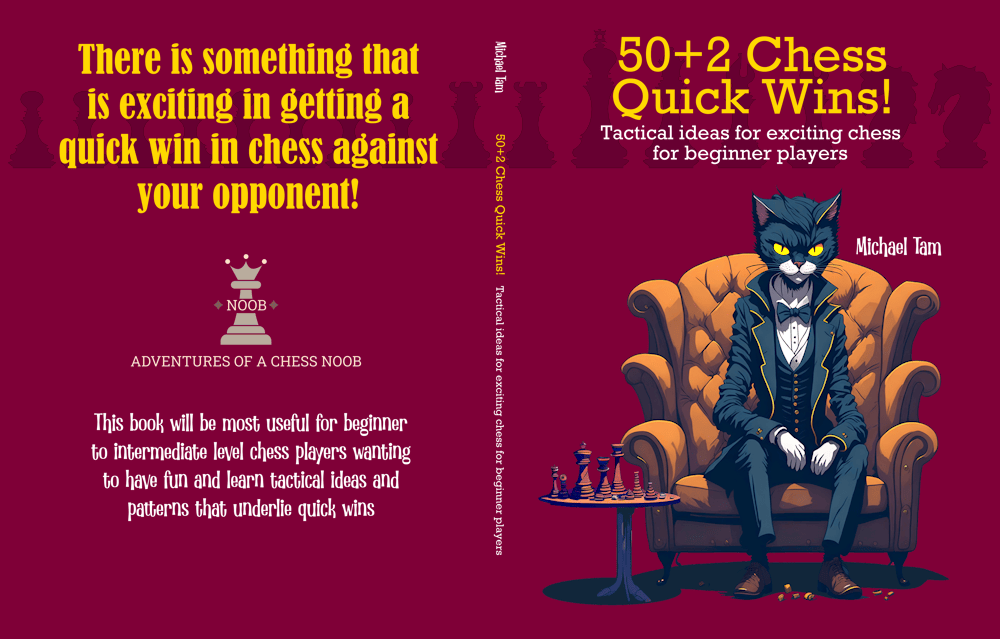
STUDY: Ponziani Steinitz Gambit - chess noob Game Review! #8
#ItalianGame #TwoKnightsDefense #FriedLiverAttack #PonzianiSteinitzGambit
Welcome to another episode of the "chessnoob Game Review" series where the focus will be on identifying in how a game, whether I win or lose, could have been improved. This gives me an opportunity to reflect more deeply about a game and hopefully, the lessons that I draw for myself will be helpful to my fellow beginner and beginner-intermediate chess players!
This game is a review of the Ponziani-Steinitz Gambit where White manages to avoid a checkmate in the opening and chooses to play on and not resign. Although Black is winning, there are a few moves to know and, in this game, I got some of those wrong!
I had the black pieces. My opponent opened with the Italian Game, I responded with the Two Knights Defense, and they attempted a Fried Liver Attack. I then used the Ponziani-Steinitz Gambit, practically a trap, and White continued the Fried Liver, something that is very good for Black (1. e4 e5 2. Nf3 Nc6 3. Bc4 Nf6 4. Ng5 Nxe4 5. Nxf7 Qh4). Against the immediate threat of mate in 1, White will commonly blunder, and my opponent did so with (6. g3), resulting in [-6.08], as the move results in the loss of the rook.
In previous games, the massive material loss from the Ponziani-Steinitz Gambit and the smashed king-side will result in emotional damage and White resigning. In this game, White played on! I didn't play very accurately after this as I wasn't entirely sure of the best follow-up responses by Black. White also spent quite a lot of time and carefully played each move. On analysis, White outplayed me after in this second half of the opening and early middle game and managed to return to equality!
Firstly, after the queen captures the rook (8... Qxh1+) and White is forced to block the check with their queen, the best move is to immediate trade queens. I mistakenly thought that I could evacuate the queen, and this is a blunder. Luckily, White returns the position to what it was before (effectively blundering back) so we have a repetition of moves and we end up trading queens after the shuffle.
I remembered previously that after this queen trade, the immediate (12. d5) is the best move. In fact, Stockfish calls this pawn sacrifice, as the white bishop to basically forced to capture, a brilliancy! It opens the light squared diagonal for my bishop and trades the material for tempo and development of the bishop. However, I couldn't remember the follow-on tactic and I'm not sure that I ever knew it! The next correct move was to keep the initiative by jumping forward with the knight (14... Nd4), to threaten the c2 pawn and an absolute fork of the back king and rook.
Instead, I attempted to prevent my rook from being captured by the knight on f7, but this was a blunder [-1.28]. The rook was lost regardless. At the end of the series of trades, White manages to win back material balance, though Stockfish still gave an evaluation strongly favouring Black [-4.31] due to better development. Unfortunately, I almost entirely lose this advantage due to suboptimal play and by move 22, my White not only had material balance, but we were back to equality according to Stockfish!
Luckily, I still had a position that was easier to play despite the evaluation. I had three connected pawns on the d-, e-, and f-files marching down the board, supporting each other towards promotion. White's king was exposed in the centre of the board while my king was safe. White's pieces, especially the knight on the edge of the board, were more difficult to coordinate, while I still had the bishop pair. Move 33 proved decisive. White allowed my e-pawn to become a passed pawn, and it was supported behind by my rook. The evaluation jumped to almost [-20] meaning that a forced checkmate probably exists. The game ended on move 40 with White timing out. My e-pawn had promoted to a queen and an easy checkmate in 3 was just on the horizon.
Game on chess.com: https://www.chess.com/game/live/62567339821



